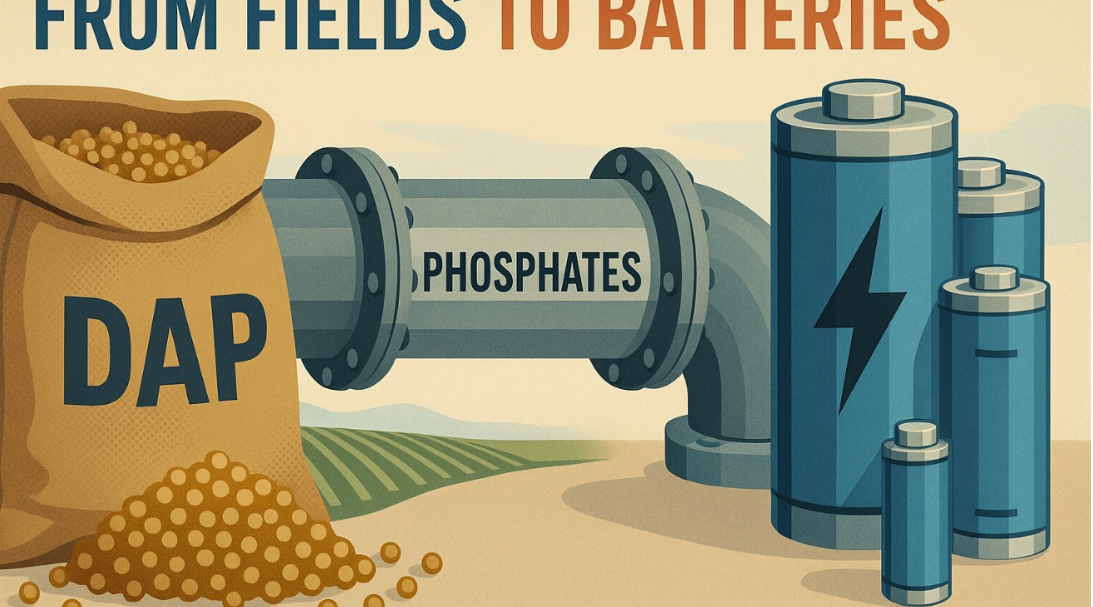
Exhibition time: 17-19 March, 2026 Shanghai, China
 中文
中文

Exhibition time: 17-19 March, 2026 Shanghai, China
 中文
中文

Did you know that DAP (diammonium phosphate) – long a staple of the fertilizer world – is now stepping onto the stage of the energy transition?
It's no longer just about crops. As demand for LFP (lithium iron phosphate) batteries accelerates, so does the demand for phosphate-based inputs. And here’s the twist: fertilizer-grade phosphate is now a starting point for battery-grade material.
What used to be a story of agriculture is fast becoming one of electrons, electric vehicles, and energy storage.
Batteries are still small – but they're hungry
Let's start with the big picture:
·Around 85 to 90 percent of globally mined phosphate still goes into fertilizers, mainly DAP and MAP.
·Battery-grade demand today is low single digits, but…
·By 2050, LFP batteries could require up to 3 million tonnes of phosphorus annually.
·Cumulative EV-related phosphorus use from 2020 to 2050 is projected at 28 to 35 million tonnes.
That's still just a slice of the pie – but it's the slice with the highest quality requirements. And that's exactly where things get interesting for traders and producers.
Same feedstock, different worlds
Fertilizer-grade phosphates are produced in vast quantities, often with impurities acceptable in agriculture.
Battery-grade? Whole different game:
·It starts with DAP or wet-process phosphoric acid.
·Then, it gets purified into PPA (purified phosphoric acid) – a high-purity, high-cost input.
·Final destination: LFP cathode material.
What this means: battery-grade players are pulling from the same upstream supply chains – but are willing to pay a premium for quality and consistency.
In practical terms, when a new LFP gigafactory opens in China or Europe, it’s not just the cathode supply chain that reacts – phosphate markets feel the ripple.
Fertilizer traders: time to watch your back
So, will this shift affect the phosphate market in a meaningful way?
Short-term: yes, but mainly through pricing.
Mid-term: expect segmented supply chains, with more players investing in purifying capacity.
Long-term: new mining projects will need to serve both agriculture and energy, especially in places like Québec and Morocco, where battery-grade output is part of the plan from day one.
What’s next?
·Watch for phosphate pricing decoupling – ag-grade vs. battery-grade.
·Expect competition for feedstocks to intensify.
·Prepare for a world where fertilizer markets no longer move purely on ag demand – but also on gigafactory buildouts and EV incentives.
Phosphates used to be a quiet, cyclical corner of the fertilizer trade. But now, every tonne might have two bidders: a farmer and a battery maker.
And that changes everything.
Source:www.fertilizerdaily.com